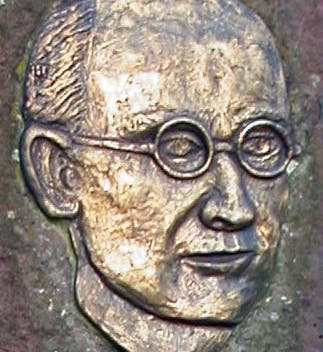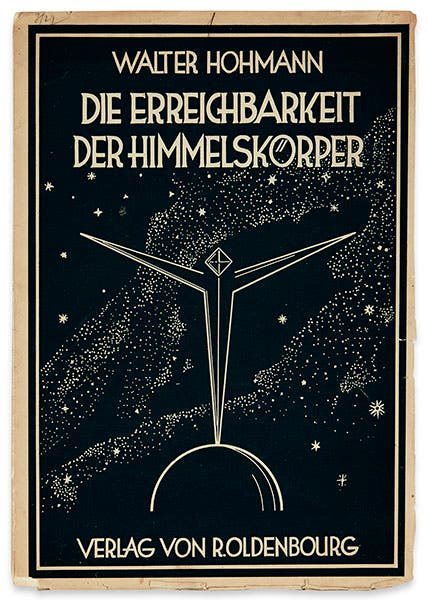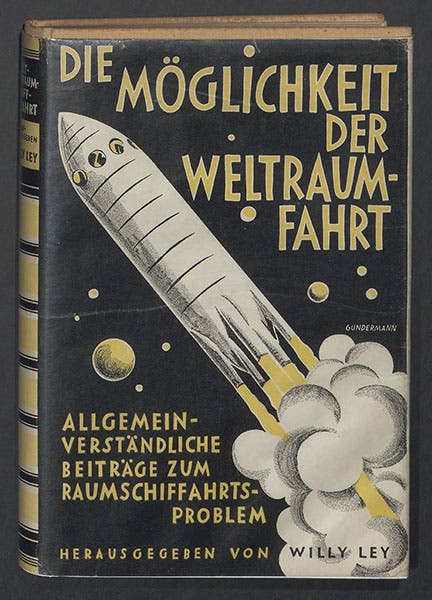Scientist of the Day - Walter Hohmann
Walter Hohmann, a German structural engineer and rocket pioneer, was born Mar. 18, 1880. As a boy, like many another future spaceflight enthusiast, he read Jules Verne, and as he pursued his engineering degree, he took an increasing interest in the possibilities of space travel. In 1925, he published a book, Die Erreichbarkeit der Himmelskörper (The Attainability of the Celestial Bodies), in which he considered the problem of getting a spacecraft into earth orbit, and then sending it to the moon or one of the planets (second image, below). He even invented an orbital maneuver that could take a spacecraft from a low orbit to a high orbit with the smallest expenditure of energy; it is still called a Hohmann transfer orbit, and is in regular use to this day. We do not have this first publication of Hohmann in our collections.
In 1927, the world's first rocket society was founded in Germany by Willy Ley and Hermann Oberth; it was called the Verein für Raumschiffahrt (Society for Spaceflight), and is usually referred to as the VfR. One of the VfR's first acts was to publish a collection of papers on the potential of spaceflight; Willy Ley edited the volume, called Die Möglichkeit der Weltraumfahrt (The Possibility of Space Travel; third image), and Hohmann was invited to contribute a paper, along with Oberth and several other rocket pioneers.
One of Hohmann's many suggestions in his paper was that we ought to consider going to the moon by putting a spacecraft into Earth orbit and then launching a separate module to the Moon, an idea that the Apollo program later adopted. Hohmann also included a diagram of his transfer orbit, showing that an elliptical trajectory is the most efficient way to move something from Earth orbit to the orbit of Jupiter (fourth image, just above). We acquired the Willy Ley volume in 2016 from San Francisco book dealer Jeremy Norman, with its paper dust jacket nicely intact. It also includes 8 portaits of the contributors; for many of those, as with Hohmann, it is the only portrait we have (fifth image, below). Now we need to find and acquire Hohmann’s 1925 book.
Hohmann lost his interest in rockets when Hitler came into power and wanted to develop rockets for use in warfare. Hohmann took no part in the goings-on at Pennemunde, and he died just before the end of the War, in 1945, after the bombing of Essen, where he lived. Sixty-five years later, the observatory in Essen was renamed the Walter Hohmann Observatory. There is a commemorative plaque there, and a memorial stone, with Hohmann's portrait carved in relief (sixth image, below). That is not a lot by which to remember one of the pioneers of the space age.
Dr. William B. Ashworth, Jr., Consultant for the History of Science, Linda Hall Library and Associate Professor emeritus, Department of History, University of Missouri-Kansas City. Comments or corrections are welcome; please direct to ashworthw@umkc.edu.











